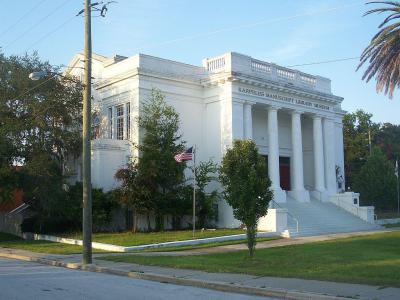

“They were shoulder to shoulder in there, and I literally couldn’t move. When he displayed that early version of the Bill of Rights in his museum there, the place was so crowded, he himself had to leave.
.jpg)
The story of Tacoma is even more impressive. In addition to its traveling exhibits of manuscripts, the Porter Hall museum has played host to the Buffalo Small Press Bookfair, fashion shoots, and weddings. So we opened in Jacksonville, and five thousand people showed up.” New Yorkers don’t go to see these things, because they know they always can. “We had the original draft of the Bill of Rights,” he said, “and only about seventy people came to see it. Karpeles tried to open a museum in New York City, but it didn’t work. Buffalo, Jacksonville, Charleston, Shreveport, Newburgh, Tacoma, and Santa Barbara represent, more or less, the four corners of the U.S., while Duluth and Fort Wayne cover the heart of the country. By locating these cities on a map, one realizes that they are geographically evenly distributed. Why, one wonders, did he open his museums in these unlikely places-in Buffalo, Duluth, Tacoma, and so on? Precisely because they are unlikely and so unable to give their citizens large, consistent doses of culture. Among them are a transcript of Handel’s Messiah annotated by Beethoven the coded instructions from the new American Congress to John Jay, Benjamin Franklin, and John Adams for their negotiations with the British government to settle the terms for America’s independence the original production drawings of “Plane Crazy,” the first (and silent) Mickey Mouse cartoon “Steamboat Willie,” the first Mickey Mouse sound cartoon the last will and testament of Walt Disney and, his favorite, a decree by Pope Lucius III, dated 1183, instructing knights on their departure to the Holy Land for the Third Crusade. It is hoped that listing the Karpeles Manuscript Library as a Place in Peril will increase awareness for the precarious condition of the structure and encourage the current owners to either move forward with rehabilitation or initiate an active search for new ownership.His interests are wide, and his holdings reflect that. A buyer was anticipated but the deal fell through and the owner does not appear to be seeking to rehabilitate or sell the property. The roof remains open to the elements, furthering deterioration. No final plans were ever announced and today, the building is in peril, having stood vacant since March of 2019. Their plans for the interior were to either renovate the building into a large open space or to remove fire-damaged sections of the building and erect what would essentially comprise a new structure.
#Karpeles manuscript library museum wedding windows
The Karpeles announced that they were looking into repairing the windows and roof. It was determined that the building was structurally sound and could be repaired. In March 2019 a fire swept through the building, and while firefighters were able to save most of the collection, the building was severely damaged. Louis Karpeles Manuscript Library opened in August of 2015, sharing its space with the St. Each museum additionally houses permanent collections focused on regionally specific items. Louis was the 13 th of the family’s museums and like the other museums, serves to house the family’s rotating collection. The museums project was initiated in 1983 by David and Martha Karpeles, wealthy California realtors who had amassed one of the largest private collections of original manuscripts covering topics from literature, science, religion, political history, art, and more. In 2015, the building was acquired by the Karpeles family, which has established (to date) 17 museums across the country. The church later housed the New Paradise Missionary Baptist Church congregation. Louis’ historic Compton Heights neighborhood, was constructed in 1911 as the Third Church of Christ, Scientist.


 0 kommentar(er)
0 kommentar(er)
